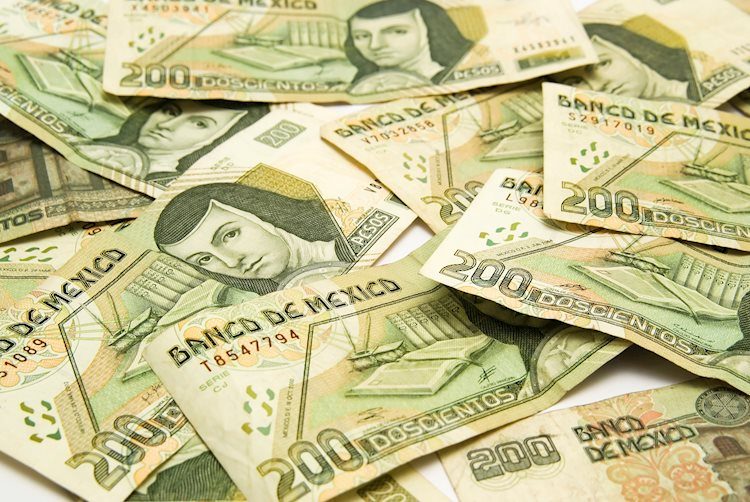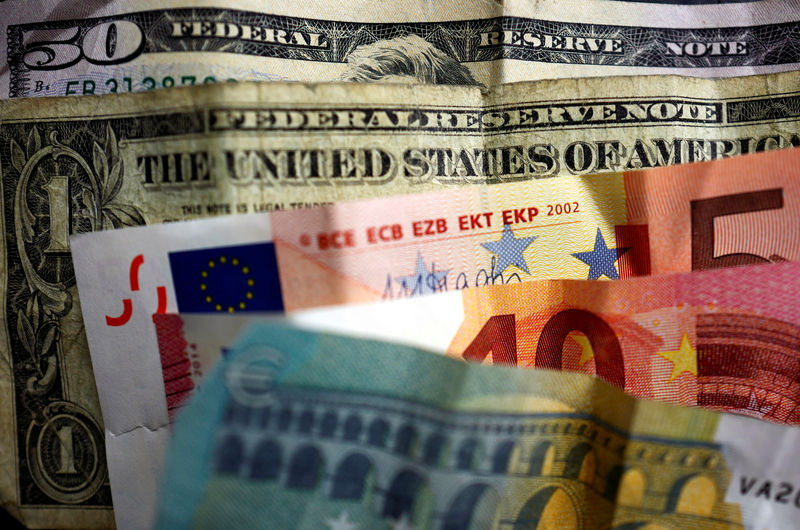- Mexican Peso tanks as USD/MXN rises over 1.50% weekly, reaching new yearly highs.
- US Dollar Index climbs as Treasury yields jump, boosting Greenback strength.
- Mexican economic data shows resilience, but US elections add uncertainty for emerging market currencies.
The Mexican Peso depreciated sharply against the Greenback on Friday and recorded new yearly highs of 20.29, above the former 20.22 peak late in the North American session, set to print weekly losses of over 1.50%. A busy schedule on both sides of the Bravo River saw upbeat figures in Mexico. Conversely, US job data was dismal, while manufacturing activity was contracted. The USD/MXN trades at 20.26, up by 1.20%.
Mexico’s schedule revealed that Business Confidence improved in October, while the Unemployment Rate remained below the 3% threshold. S&P Global revealed that manufacturing activity continued to expand. Foreign exchange reserves ticked higher, announced the Bank of Mexico (Banxico), which revealed its private poll that showed most economists foresee the economy growing half of the estimated in January, at a 1.4% pace.
In the US, the Bureau of Labor Statistics (BLS) released October’s Nonfarm payroll figures, which were worse than foreseen. The BLS mentioned that several hurricanes and union strikes were to blame for the dismal report. After that, the Institute for Supply Management (ISM) Manufacturing PMI fell to its lowest level since July 2023.
The USD/MXN soared after the data, boosted by the US Dollar Index (DXY), which tracks the American currency against six other currencies. The index rose 0.41% to 104.31. The buck was underpinned by a late jump in US Treasury yields, with the 10-year T-note ending at 4.38%, up ten basis points in the day.
Aside from this, the upcoming US Presidential Elections could pressure the emerging market currency. The close race for the White House between former President Donald Trump and Vice President Kamala Harris keeps investors nervous, which, according to Bloomberg, piled into long US Dollar positions ahead of the result.
Daily digest market movers: Mexican Peso pressured ahead of US elections
- The USD/MXN remains adrift to political turmoil in Mexico after the approval of the controversial judiciary reform. Eight of the eleven Supreme Court judges announced their resignation effectively in August 2025.
- Meanwhile, remittances in Mexico posted their largest drop in eleven years in September, down 4.6% compared to the same month a year ago, via Bank of Mexico. Remittances reached $5.36 billion, less than the $5.62 billion recorded in the same month last year.
- Mexico’s Business Confidence in October improved from 52.1 to 52.3. S&P Global revealed that Manufacturing PMI for the same period stood at contractionary territory, despite improving. The index moved up from 47.30 to 48.4.
- The US Bureau of Labor Statistics (BLS) reported that Nonfarm Payrolls in October were impacted by strong hurricanes and union strikes. The US economy added only 12K jobs, well below the estimated 113 K. Despite this, the unemployment rate remained steady at 4.1%, as traders await additional economic data.
- The Institute for Supply Management (ISM) reported that manufacturing activity declined for the seventh consecutive month, reaching its lowest level since July 2023. The ISM Manufacturing PMI dropped from 47.2 to 46.5, missing forecasts of 47.6.
- Data from the Chicago Board of Trade, via the December fed funds rate futures contract, shows investors estimate 49 bps of Fed easing by the end of the year.
USD/MXN technical outlook: Mexican Peso drops as USD/MXN eyes 20.50
As commented in the previous report, the USD/MXN finally exploded to the upside, recording a new yearly high. This has cleared the path to challenge the 20.50 figure, followed by the September 28, 2022, high at 20.57 and the August 2, 2022, peak at 20.82. Once surpassed, the next stop would be March 8, 2022, swing high at 21.46.
Conversely, if USD/MXN tumbles below 20.00, the next support would be the October 24 daily low of 19.74, followed by the 50-day Simple Moving Average (SMA) at 19.62.
Mexican Peso FAQs
The Mexican Peso (MXN) is the most traded currency among its Latin American peers. Its value is broadly determined by the performance of the Mexican economy, the country’s central bank’s policy, the amount of foreign investment in the country and even the levels of remittances sent by Mexicans who live abroad, particularly in the United States. Geopolitical trends can also move MXN: for example, the process of nearshoring – or the decision by some firms to relocate manufacturing capacity and supply chains closer to their home countries – is also seen as a catalyst for the Mexican currency as the country is considered a key manufacturing hub in the American continent. Another catalyst for MXN is Oil prices as Mexico is a key exporter of the commodity.
The main objective of Mexico’s central bank, also known as Banxico, is to maintain inflation at low and stable levels (at or close to its target of 3%, the midpoint in a tolerance band of between 2% and 4%). To this end, the bank sets an appropriate level of interest rates. When inflation is too high, Banxico will attempt to tame it by raising interest rates, making it more expensive for households and businesses to borrow money, thus cooling demand and the overall economy. Higher interest rates are generally positive for the Mexican Peso (MXN) as they lead to higher yields, making the country a more attractive place for investors. On the contrary, lower interest rates tend to weaken MXN.
Macroeconomic data releases are key to assess the state of the economy and can have an impact on the Mexican Peso (MXN) valuation. A strong Mexican economy, based on high economic growth, low unemployment and high confidence is good for MXN. Not only does it attract more foreign investment but it may encourage the Bank of Mexico (Banxico) to increase interest rates, particularly if this strength comes together with elevated inflation. However, if economic data is weak, MXN is likely to depreciate.
As an emerging-market currency, the Mexican Peso (MXN) tends to strive during risk-on periods, or when investors perceive that broader market risks are low and thus are eager to engage with investments that carry a higher risk. Conversely, MXN tends to weaken at times of market turbulence or economic uncertainty as investors tend to sell higher-risk assets and flee to the more-stable safe havens.













